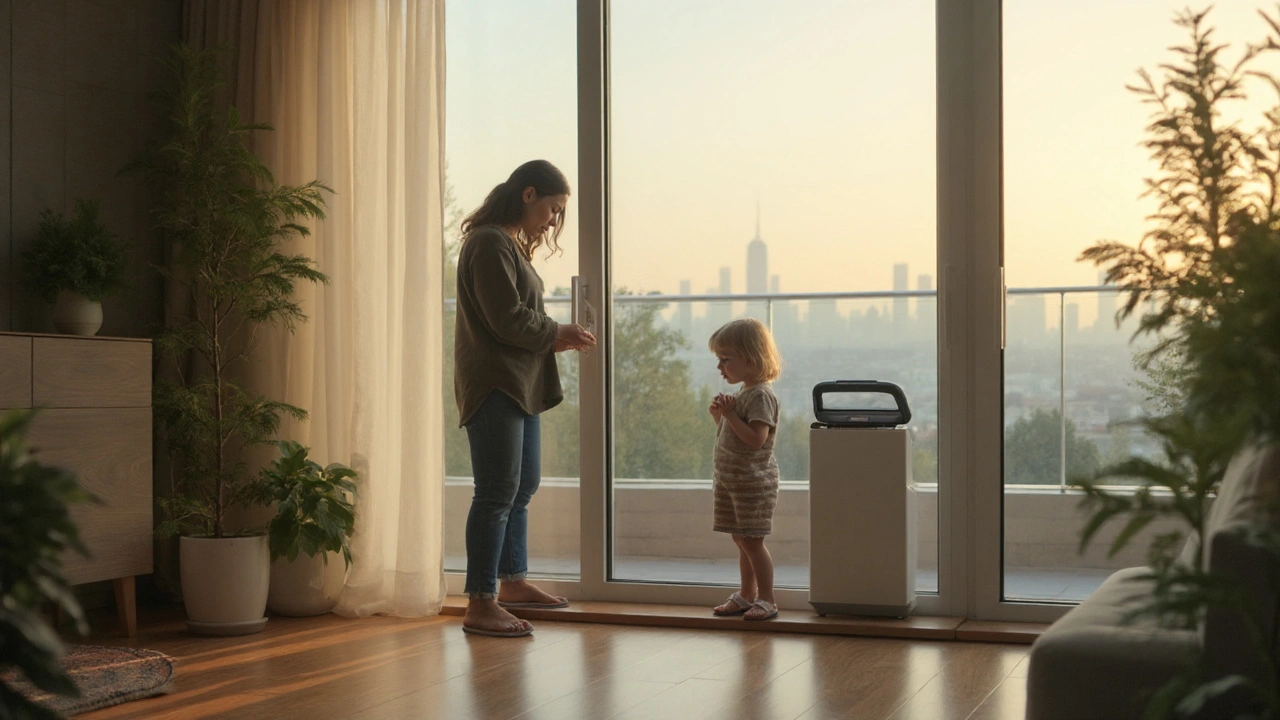Quick Take
- Environmental allergens account for up to 70% of allergy flare‑ups.
- Air pollution, pollen, dust mites and mold are the top indoor and outdoor triggers.
- Genetics set the stage, but exposure determines severity.
- Climate change is stretching pollen seasons, worsening symptoms.
- Simple home fixes and lifestyle tweaks can cut risk by 30‑40%.
Environmental factor is a condition or substance in the surroundings that can provoke or worsen allergic reactions. Understanding how these factors interact with the immune system is crucial for anyone battling sneezing fits, itchy eyes or asthma attacks.
What Are Allergic Disorders?
Allergic disorder is a hyper‑reactive immune condition where harmless substances trigger inflammation. The most common types include allergic rhinitis, atopic dermatitis, food allergy and allergic asthma. Symptoms often overlap-runny nose, wheeze, skin rash-making it easy to miss the underlying trigger.
Key Environmental Triggers
While dozens of substances can act as allergens, a handful dominate the landscape.
- Air pollution is a mix of particulate matter, ozone, nitrogen dioxide and other pollutants from traffic, industry and combustion. Studies from the American Lung Association show that a 10µg/m³ rise in PM2.5 increases asthma emergency visits by 8%.
- Pollen is a fine powder released by plants for reproduction, containing proteins that many people recognize as allergens. In North America, pollen counts peak between March and September, aligning with the highest allergy medication sales.
- Dust mite is a microscopic arthropod that thrives in warm, humid bedding and upholstery. Its feces contain Der p 1 and Der f 1 proteins, responsible for up to 60% of indoor allergy cases.
- Mold spores are reproductive units of fungi that float in damp indoor air. Exposure can trigger both allergic rhinitis and hypersensitivity pneumonitis.
- Tobacco smoke is a complex aerosol containing nicotine, tar and thousands of irritants. Even second‑hand smoke raises the risk of developing asthma in children by 25%.
How Exposure Shapes the Immune Response
The immune system distinguishes self from non‑self through a series of checks. When an environmental allergens reaches the nasal lining, epithelial cells release cytokines that recruit IgE‑producing B‑cells. Re‑exposure leads to mast cell degranulation, releasing histamine and leukotrienes-what we feel as itching, swelling, and bronchoconstriction.
Two mechanisms amplify the effect:
- Adjuvant effect: Pollutants like diesel exhaust particles act as adjuvants, boosting IgE production and lowering the threshold for symptom onset.
- Barrier disruption: Smoke and dry indoor air damage the mucosal barrier, making it easier for pollen or dust mite proteins to penetrate.
Seasonal vs. Perennial Allergens
Seasonal allergens-primarily pollen-flare during specific months. Perennial allergens-dust mites, mold, indoor pollutants-persist year‑round. Climate change is blurring the line; warmer winters lengthen pollen seasons, extending exposure windows.
| Attribute | Indoor | Outdoor |
|---|---|---|
| Common sources | Dust mites, mold, tobacco smoke, pet dander | Pollen, tree pollens, grass, ragweed, air pollution |
| Typical exposure level | Moderate‑high indoors, spikes in humid periods | Variable; peaks during plant flowering and high traffic days |
| Seasonal variation | Relatively constant, may increase in damp months | Strongly seasonal, but climate change is lengthening peaks |
| Typical symptom severity | Chronic low‑grade inflammation, nighttime coughing | Acute flare‑ups, sneezing fits, eye irritation |

Mitigation Strategies You Can Start Today
Reducing exposure doesn’t require a complete lifestyle overhaul. Target the biggest contributors first.
- Air filtration: HEPA filters capture >99% of particles >0.3µm, cutting indoor pollen and dust mite counts by up to 40%.
- Humidity control: Keep indoor humidity below 50% with dehumidifiers; this starves dust mites and mold.
- Ventilation: Open windows in low‑pollution periods (early morning, after rain) to exchange stale indoor air.
- Cleaning routine: Wash bedding at 60°C weekly, vacuum with a HEPA‑equipped vacuum, and mop floors with a damp cloth instead of dry sweeping.
- Personal protection: Wear sunglasses outdoors to shield eyes from pollen; consider N95 masks on high‑pollution days.
Emerging Research: Climate Change and the Allergy Burden
Recent reports from the World Health Organization link rising global temperatures to longer, more potent pollen seasons. Higher CO₂ levels boost pollen production by up to 30% in ragweed and birch trees. This translates to more frequent emergency department visits for asthma during what used to be “off‑season”.
Researchers are exploring allergen‑specific immunotherapy combined with anti‑oxidant diets to counteract the oxidative stress caused by pollutants. Early trials suggest a 15% reduction in symptom scores when patients follow a Mediterranean‑style diet rich in omega‑3 fatty acids.
Practical Checklist for Allergy‑Safe Environments
- Install a HEPA air purifier in bedroom and living room.
- Set humidifier/dehumidifier to maintain 30‑50% relative humidity.
- Replace HVAC filters every 3 months with high‑efficiency models.
- Wash sheets, pillowcases and stuffed toys in hot water weekly.
- Use waterproof covers on mattresses and pillows.
- Keep windows closed on high‑pollen days (check local pollen forecasts).
- Limit indoor smoking; use air‑cleaning candles only as a secondary measure.
- Plan outdoor activities for early morning or after rain when pollen is lower.
By tackling the biggest environmental drivers, most people can slash their allergy burden dramatically, often without medication.
Frequently Asked Questions
Can air purifiers really help with pollen allergies?
Yes. HEPA‑rated purifiers trap >99% of pollen grains and fine particulate matter. In a 2023 clinical trial, participants who used a bedroom HEPA unit reported a 35% drop in daytime sneeze frequency.
Why do my allergy symptoms get worse in winter?
Winter brings drier indoor air, which irritates nasal passages, and people spend more time inside where dust mites and mold can accumulate. Moreover, heating systems can circulate trapped pollutants unless filters are changed.
Is there a link between smoking and food allergies?
Second‑hand smoke can increase gut permeability, making it easier for food proteins to cross the intestinal barrier and trigger IgE responses. Studies show children exposed to household smoke have a 20% higher risk of developing peanut allergy.
How does climate change affect mold growth?
Warmer temperatures and more frequent heavy rainfall raise indoor humidity levels, creating ideal conditions for mold spores to germinate. The EPA notes a 12% increase in indoor mold complaints in regions experiencing hotter summers.
What’s the best way to test for specific environmental allergies?
A combination of skin‑prick testing (for rapid results) and serum-specific IgE panels (for precise quantification) provides the most accurate picture. An allergist can also conduct a provocation test in a controlled environment.
Can diet help reduce allergy severity?
A Mediterranean diet rich in omega‑3 fatty acids, fruits, and vegetables supplies anti‑inflammatory compounds that may lower IgE levels. A 2022 meta‑analysis linked higher omega‑3 intake with a 10% reduction in asthma exacerbations.

Comments (12)